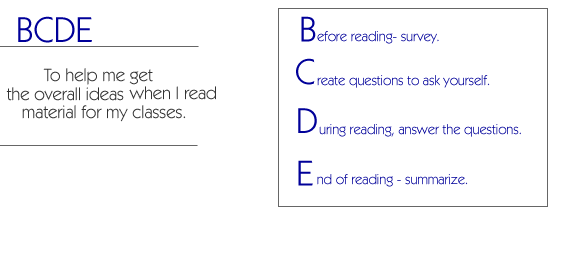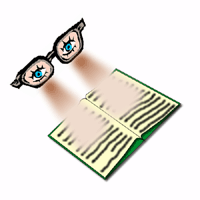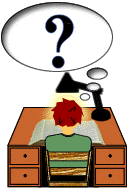B efore reading, survey the material to be read.
- Always look over the pages you have to read before you actually start reading.
- If you are reading a textbook, read the title, side headings, paragraph headings, pictures, boldface words, and study questions. Think of how this chapter is related to previous chapters.
- If you are reading a story, look back at the previous section you read and predict what you think will happen in this section. Skim the paragraphs to get some idea of what might be in the section you will be reading. Make predictions about the characters and the actions that you think will take place.
|
|
|
C reate questions to ask yourself while you read the material.
- For textbooks, create questions about the material based on the title, side headings, paragraph headings, pictures, graphics, boldface words, and study questions. Write these on the front of note cards.
- For stories, write questions based on the predictions that you made. Make predictions about the characters and actions.
|
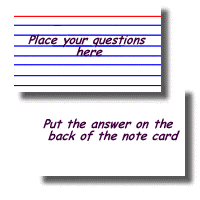 |
D uring reading of the material, answer the questions that you wrote on the note cards.
- As you read the material, keep the questions that you wrote in mind.
- When you find the answers to the questions, write them on the backs of the cards.
|
|
E nd of reading.
- After you have finished reading, look over all the questions you wrote. If you did not find an answer to a question, go back and try to find it.
- Ask yourself the questions and try to answer them.
- Say aloud to yourself a summary of the main ideas of what you just read.
- Ask yourself how the material you just read is related to material that you read before this.
- Predict how the material you just read will be related to the material that you will read next.
|
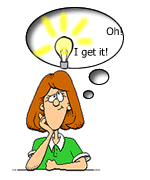 |
|

